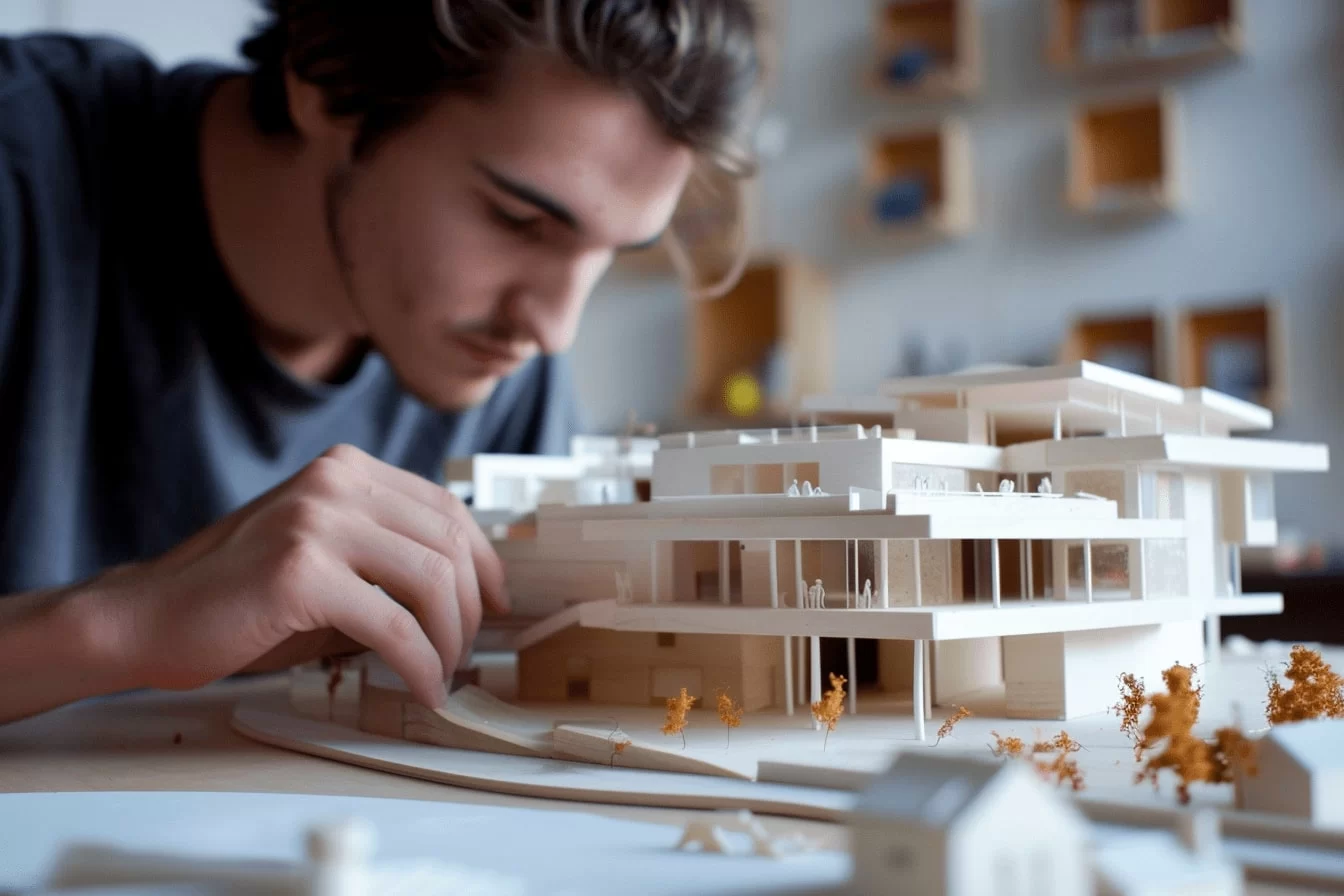How Architects Use 3D Modeling for Designing Buildings: Revolutionizing Architecture
- 1. The Importance of 3D Modeling in Architecture
- 2. How 3D Modeling Has Evolved Over the Years
- 3. Tools and Software Used by Architects
- 4. Benefits of Using 3D Modeling in Architecture
- 5. Real-World Examples of 3D Modeling in Architecture
- 6. The Future of 3D Modeling in Architecture
1. The Importance of 3D Modeling in Architecture
In today’s world, the role of 3D modeling in architecture has grown exponentially. Architects no longer rely solely on traditional blueprints or physical models to convey their designs. Instead, 3D modeling has revolutionized the architectural design process, providing an immersive, realistic way to visualize structures before construction even begins. This shift not only enhances the accuracy of designs but also streamlines communication between architects, clients, and construction teams.
3D modeling allows architects to create highly detailed, scale-accurate models of buildings, providing them with a clearer understanding of how the final product will look. These models help identify potential design flaws early on, reducing costly mistakes during construction. Additionally, 3D models can be shared and modified easily, fostering collaboration and faster decision-making.
2. How 3D Modeling Has Evolved Over the Years
Over the past few decades, 3D modeling has come a long way, evolving from simple geometric shapes to highly intricate digital representations of architectural designs. In the early days, architects had to rely on hand-drawn sketches and physical scale models to represent their ideas. The advent of computer-aided design (CAD) software was a game-changer, allowing for more precise and detailed drawings.
As technology advanced, 3D modeling software became increasingly sophisticated, offering tools that simulate lighting, textures, and real-world materials. This has allowed architects to create highly accurate virtual buildings that look and behave like the real thing. Today, architects can use 3D modeling not just to design buildings, but to simulate how they will interact with their environment, making it a powerful tool for sustainable design and urban planning.
3. Tools and Software Used by Architects
There are several powerful tools and software programs that architects use to create 3D models of their designs. Some of the most popular include:
3.1. Autodesk Revit
Autodesk Revit is one of the most widely used 3D modeling software programs in architecture. It is specifically designed for building information modeling (BIM), allowing architects to create highly detailed and accurate 3D representations of buildings. Revit’s integration with other Autodesk products makes it a seamless option for architects working on complex projects.
3.2. SketchUp
SketchUp is known for its user-friendly interface and versatility, making it a favorite among architects and designers. It’s ideal for quickly generating conceptual designs and easily visualizing them in 3D. Although it may not have all the advanced features of software like Revit, SketchUp is a great tool for early-stage design and presentations.
3.3. Rhino
Rhino is a 3D modeling software that excels in creating complex and highly detailed geometries. It is particularly popular for designing freeform shapes and structures that require intricate detailing. Rhino is often used in conjunction with other software, like Revit or AutoCAD, to create precise models of complex architectural features.
3.4. Blender
Blender is a free and open-source 3D modeling software that has become increasingly popular among architects for its flexibility and advanced rendering capabilities. While it is more commonly associated with animation and game design, Blender’s features, like photorealistic rendering and texture mapping, make it a great option for architectural visualization.
4. Benefits of Using 3D Modeling in Architecture
Using 3D modeling in architecture offers numerous advantages that benefit both architects and their clients:
4.1. Enhanced Visualization
One of the biggest benefits of 3D modeling is its ability to provide a realistic representation of architectural designs. Clients can see a building from all angles, get a feel for the space, and even interact with the model in virtual environments. This enhances communication and ensures that both the architect and client are aligned on the design vision.
4.2. Improved Accuracy
3D models reduce the likelihood of errors during construction by providing accurate, detailed representations of buildings. This level of precision helps architects and builders avoid costly mistakes that might occur with traditional 2D drawings.
4.3. Greater Efficiency
3D modeling allows architects to test and modify their designs quickly, without having to build physical models. Changes can be made in real-time, saving both time and resources. Additionally, architects can run simulations to evaluate how their designs will perform under various conditions, such as how they will react to environmental factors like sunlight or wind.
5. Real-World Examples of 3D Modeling in Architecture
There are several high-profile projects where 3D modeling played a crucial role in the design process. A notable example is the Burj Khalifa in Dubai, the world’s tallest building. The architects and engineers used 3D modeling software to create detailed simulations that helped refine the building’s structure and optimize its performance.
Another example is the Walt Disney Concert Hall in Los Angeles, designed by Frank Gehry. The unique, curvilinear forms of the building were made possible by advanced 3D modeling software that allowed the architect to design complex shapes that would have been nearly impossible to construct using traditional methods.
6. The Future of 3D Modeling in Architecture
Looking ahead, the future of 3D modeling in architecture is incredibly exciting. With the rise of virtual reality (VR) and augmented reality (AR), architects are now able to create immersive experiences for their clients, allowing them to walk through a building before it’s even constructed. This technology will continue to improve how architects design, plan, and communicate their ideas, pushing the boundaries of what’s possible in architectural design.
As artificial intelligence (AI) and machine learning continue to evolve, architects will also be able to leverage these technologies to make smarter design decisions. AI-driven software can analyze vast amounts of data, helping architects optimize their designs for energy efficiency, sustainability, and overall performance.
In conclusion, 3D modeling is not just a tool—it’s a game changer in the field of architecture. As technology continues to evolve, architects will have even more powerful tools at their disposal to create innovative, sustainable, and efficient designs. For those looking to stay ahead in the world of architecture, exploring the potential of 3D modeling is essential. For more information on how 3D modeling can enhance your architectural projects, visit 10 Jay Street.









